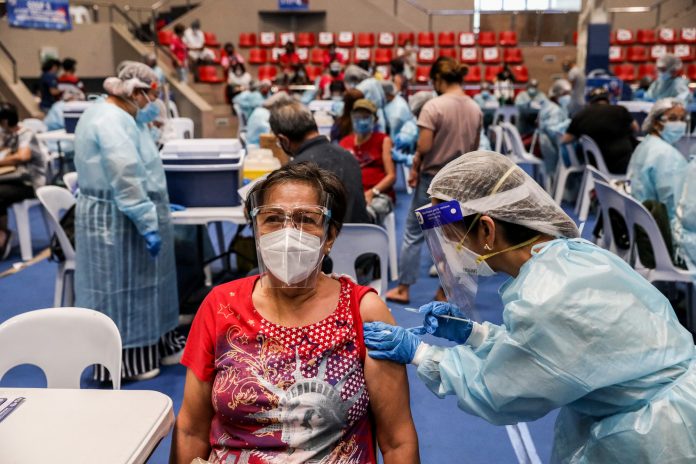Independent research group OCTA noted an uptick in the growth rate and reproduction number of COVID-19 cases in Metro Manila compared to the previous week.
Dr. Guido David, OCTA research fellow, said the capital recorded an average of 435 cases per day from November 8 to 14, a “positive” growth rate of 8 percent from the 404 cases per day a week ago.
“The growth rate had been consistently negative since Sept. 18, when the downward trend was confirmed,” David said in a post on Twitter.
Metro Manila’s reproduction number, or the average number of secondary infections by each infected individual, also increased to 0.52 from 0.37.
David, however, said there is “no indication yet of an upward trend in cases,” but he said “we are seeing a readjustment of numbers due to backlog.”
“Are we seeing an upward trend? At this time, my analysis says no, at least not yet. But let’s not be complacent,” he said.
On October 26, OCTA reported that Metro Manila was already at low risk for COVID-19 due to a continued decline in infections.
The Department of Health also declared Metro Manila’s low-risk classification for COVID-19 on November 2.
On Monday, November 15, the Philippines recorded 1,547 new COVID-19 cases, the lowest daily tally in six days, and a positivity rate of 4.1 percent.
Of the total 2,818,511 recorded cases since the start of the pandemic in the country, 27,025 or 1 percent are active infections, according to the Health department.
The number of active cases is the lowest in nearly nine months, or since February 22 when 26,519 active infections were recorded.
COVID-related deaths increased by 128 to 45,709. The DOH also reported 2,601 more recoveries, raising the total number of recuperations to 2,745,777.
The 4.1 percent positivity rate was based on test results of samples from 39,147 individuals on November 13, Saturday.
The World Health Organization’s (WHO) benchmark for positivity rate is 5 percent or lower for at least two weeks. A relatively high rate means more people should be tested for the coronavirus.









